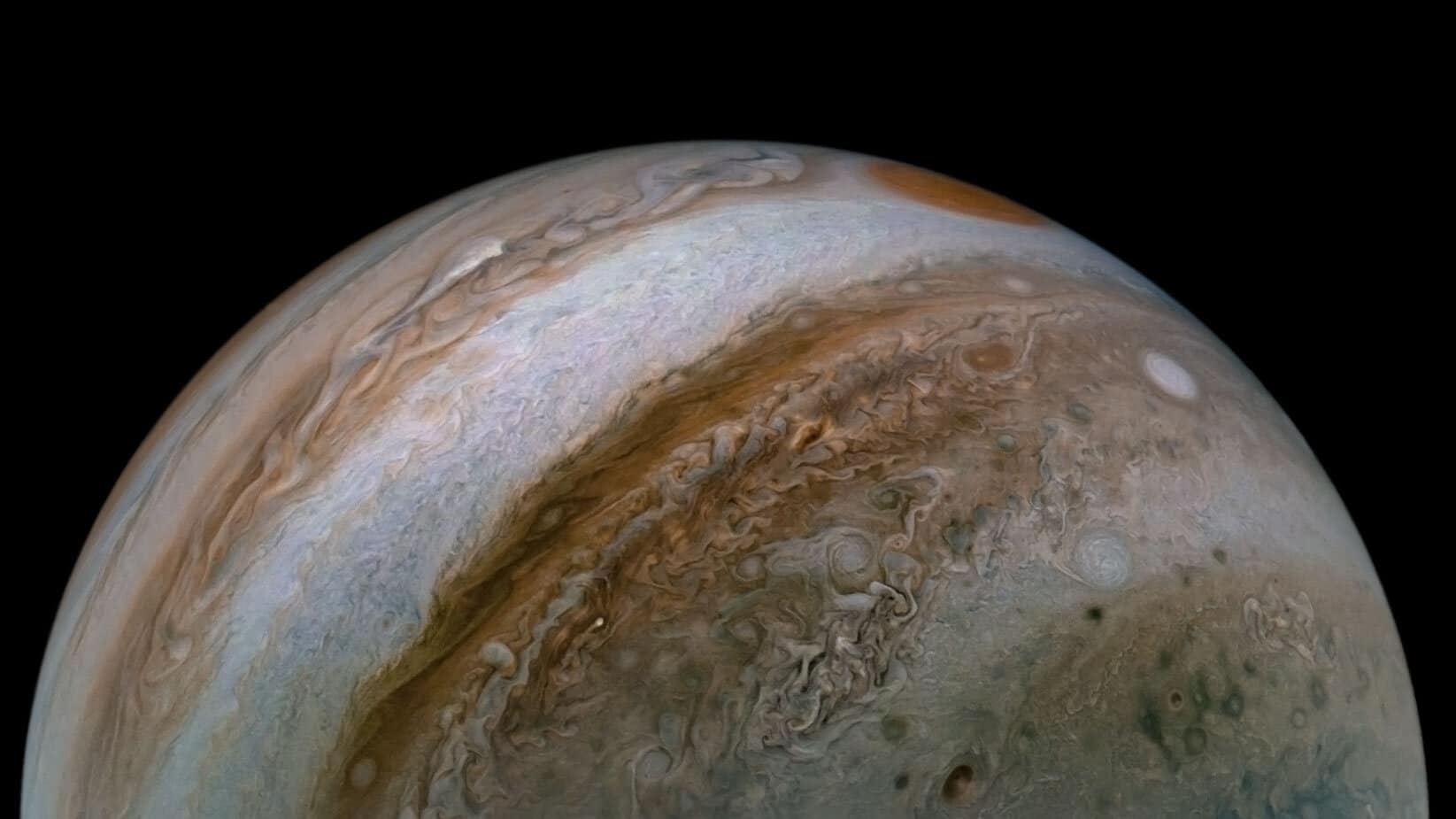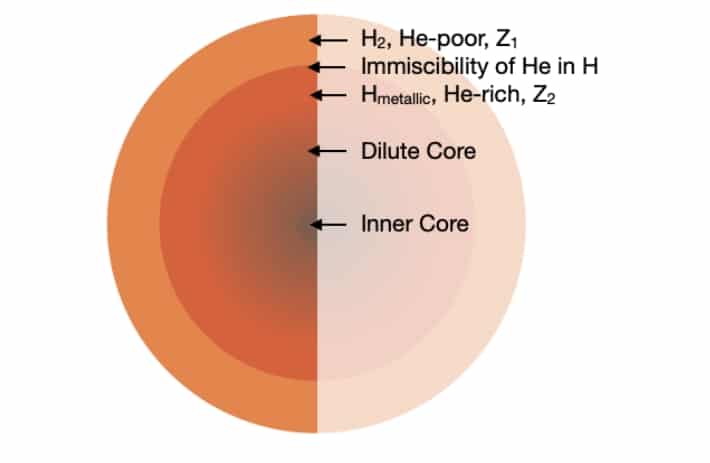Scientists have built a computer model of the interior of Jupiter, which, finally, quite well matched the observed data. Jupiter’s core is small, but the shell of metallic hydrogen turned out to be enriched with heavy elements, the concentration of which gradually increases towards the center of the planet.

In the outer part of the solar system, there are planets that are strikingly different from our Earth. Gas giants do not have the usual solid surface, but instead a huge thickness of gases and “ice” is hidden under the clouds, experiencing ultra-high pressures and temperatures.
According to classical theory, gas giants, which in our system include Jupiter and Saturn, consist of three layers: a massive hydrogen-helium shell, a “mantle” of metallic hydrogen, and a relatively small core of exotic forms of rocks and ice (Uranus and Neptune are now separated into a separate class – ice giants).
Until recently, it was impossible to verify this. The easiest way to find out the structure of the bowels of other planets is to accurately measure the gravitational field of the planet from a close orbit and use it to build a model of the distribution of matter inside it.
In the Twenty – First Century, the gravitational field of giants was finally studied using high-precision tracking of the trajectory of orbiters-Juno at Jupiter and Cassini at Saturn. Preliminary analysis, published in 2017, showed that early ideas about the interior of Jupiter significantly differ from the observed data.
It turned out that its core is “dissolved “in metallic hydrogen: the concentration of” metals”, to which astronomers refer all elements heavier than helium, gradually decreases when moving away from the center and remains significant to about half the radius of the planet.
In the new work, an international team led by scientists from the Netherlands Institute for Space Research (SRON) conducted repeated computer simulations of Jupiter’s interior (a preprint of the original paper can be found here). This time, they sought to find a self-consistent model that could achieve a more accurate match with both the results of gravitational studies and other observational data.
It turned out that the bowels of Jupiter are warmed up a little more than previously thought. At the same time, their complete mixing does not occur, despite the” liquid ” state of the substance. Therefore, the temperature of the cloud layer is lower than expected, and heavy elements inside the planet are unevenly distributed.

The new models completely exclude both a clear transition between the core and the mantle, and its opposite — evenly mixed heavy elements. Their concentration gradually increases as they move deeper, which confirms the “dissolved core”hypothesis.
If we assume, according to previous studies, that the total mass of heavy elements in Jupiter is 24-28 earth elements (Jupiter itself is 318 times more massive than Earth), the picture is as follows.
The mass of Jupiter’s inner core, consisting only of heavy elements, does not exceed seven, but most likely four Earth masses. Two more — mainly water vapor, methane, ammonia and hydrogen sulfide-are located in the upper shells of the planet, and the rest, 15-25 Earth masses, are distributed over the lower mantle of metallic hydrogen. There, in addition to “ice”, dissolved” rocks” — What under normal conditions are silicates and iron alloys.
The new model, unlike the previous ones, is also consistent with the observed content of heavy elements in the upper atmosphere of Jupiter. In addition, she confirmed that the zonal wind belts observed with the telescope as bands on Jupiter’s disk extend far inland. They can be traced to a depth of three thousand kilometers, where the pressure is 100 thousand atmospheres.
The model also allows us to clarify the mechanism of heavy elements hitting Jupiter during its formation. Most of all, it is consistent with the bombardment of kilometer-sized planetesimals, rather than a continuous stream of small “rubble”.
Note that, in addition to measuring the gravitational field, there is another method of studying the subsurface, which is suitable for gas and ice giants as well as for rocky planets and stars — this is Seismology. It gives much more accurate results than gravity.
Only in the case of bodies that do not have a solid surface, it is necessary to measure not concussions, but continuous vibrations of the gas shells of a celestial body. Let’s hope that someday long-lived probes will appear in the atmospheres of Jupiter and other giants that directly measure their breathing and pulse.
